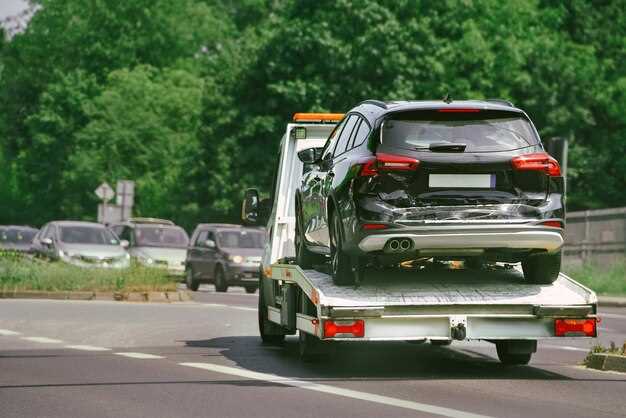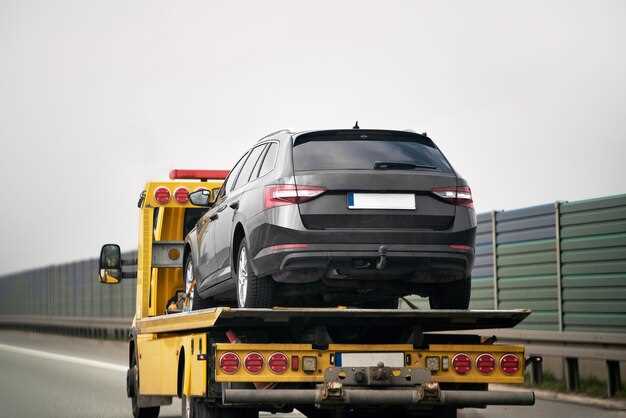
Towing a trailer on the highway requires careful attention to safety and proper techniques to ensure a smooth journey. Whether you are hauling equipment, recreational vehicles, or other goods, understanding the necessary precautions is essential for both you and other road users. Proper planning and knowledge about your towing setup can make a significant difference in how safely you navigate the open road.
Before embarking on your journey, it is crucial to familiarize yourself with the towing capacity of your vehicle, as well as the specifications of the trailer you intend to tow. This understanding helps you avoid potential hazards related to overloading, which can compromise your vehicle’s performance and increase the risk of accidents. Additionally, ensuring that all connections between your vehicle and the trailer are secure will help maintain stability while driving on highways.
When you are on the highway, it is imperative to maintain a safe distance from other vehicles and to be aware of your trailer’s wider turning radius. Properly adjusting your speed according to road conditions and being mindful of wind influences can greatly enhance your driving experience and significantly reduce the likelihood of encountering safety issues during your trip. By following these safety tips, you can ensure a secure and efficient towing experience on the highway.
Understanding Weight Distribution and Load Limits

Proper weight distribution is crucial for safe towing and driving on the highway. When a trailer is improperly loaded, it can lead to instability, increased braking distance, and difficulty controlling the vehicle, all of which can compromise safety.
The weight limit of your towing vehicle and trailer must be adhered to, as exceeding these limits can cause mechanical failure and accidents. It is essential to check the manufacturer’s specifications for both the towing vehicle and the trailer to determine the maximum allowable weights.
To achieve optimal weight distribution, load heavier items in the front of the trailer, near the axle. This practice helps maintain balance and stability while driving. A rule of thumb is that 60% of the load should be in the front and 40% in the back. This configuration lowers the risk of swaying, especially in windy conditions.
Additionally, utilizing weight distribution hitches can greatly improve the towing experience. These devices distribute weight evenly over the axles of both the tow vehicle and the trailer, enhancing stability and traction. When properly installed, they can help mitigate the effects of weight shifts during driving.
Regularly inspect the load to ensure it remains secure and well-distributed throughout your journey. Safety should always be your top priority when towing. By understanding and implementing these principles of weight distribution and load limits, you can enhance your driving experience and protect yourself and others on the highway.
Techniques for Maneuvering and Braking with a Trailer

Maneuvering and braking with a trailer requires specific techniques to ensure safety on the highway. Understanding how to handle your towing vehicle and trailer in various situations is essential for a secure travel experience.
1. Turning and Cornering: When making turns, it’s crucial to account for the trailer’s width and length. Always make wider turns than you would without a trailer. This minimizes the risk of the trailer hitting curbs or other obstacles. Use your mirrors to monitor the trailer’s position and adjust your steering accordingly.
2. Lane Changes: Before changing lanes, always check your mirrors to ensure the trailer is safely clear of other vehicles. Signal well in advance and give yourself ample space to maneuver. Remember, trailers take longer to change lanes compared to regular vehicles.
3. Braking: When braking with a trailer, it’s vital to apply brakes gradually rather than suddenly. This prevents the trailer from pushing against the towing vehicle, which can lead to loss of control. Use a lower gear when descending steep hills to utilize engine braking, reducing the reliance on brake pressure.
4. Anticipating Stops: Maintain a greater following distance than you typically would. This allows for smoother braking and ample time to stop. Heavy trailers require increased stopping distance; be prepared for longer stopping times.
5. Backing Up: When backing up, turn the steering wheel in the opposite direction of your trailer’s angle. This provides better control. Use a spotter, if possible, to assist with visibility and guide you while reversing.
6. Practice: If you’re new to towing, consider practicing in a safe, open area. Familiarize yourself with your towing setup and get comfortable with maneuvering and braking.
Implementing these techniques not only enhances safety but also boosts confidence while towing a trailer. Awareness and attentiveness can significantly mitigate risks on the highway.
Maintaining Visibility and Awareness on the Road
When towing a trailer on the highway, maintaining visibility is crucial for safe driving. Ensure that all mirrors are properly adjusted before you begin your journey. Side mirrors should show enough of the adjacent lanes to identify vehicles that may be near your trailer. A wide-angle mirror can enhance your field of view, significantly reducing blind spots.
Moreover, check that your trailer’s brake lights and turn signals are functioning correctly. This ensures other drivers are aware of your intentions, reducing the likelihood of accidents. Regularly inspect your trailer connection to ensure it remains secure throughout the drive, as a loose connection can affect visibility and control.
Awareness of your surroundings is equally important. Always keep an eye on other vehicles, particularly large trucks and buses that may have difficulty seeing your trailer. Be mindful of changing weather conditions, which can impact visibility; rain, fog, and heavy winds require additional caution while towing.
Adjust your driving speed according to both road conditions and the length of your trailer. Slower speeds typically provide better handling and visibility, allowing for easier navigation around curves and during lane changes. Additionally, maintain a larger following distance to give yourself ample time to react to unexpected changes in traffic.
Lastly, utilize your vehicle’s technology, such as cameras or sensors, if equipped, to improve visibility around your trailer. These tools can provide critical information about nearby vehicles, helping you make safer driving decisions. By prioritizing visibility and awareness, you can enhance towing safety on the highway.





